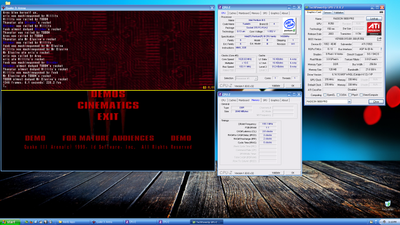So the 840 in stock speed tests wins but the BX Wins overall if you overclock. So many of the scores are considered toss ups, at least by "gamers nexus standards" That there is no clear winner in a lot of tests however there are clear losers like i820 and i815 are terrible.
I would of liked to see some other games besides Quake bench marked so it seems it favors the apollo 266 in overclocking test. But In stock speeds its more of a toss up in reality. To the point that the conclusion might be if you are not overclocking than it really doesn't matter and if you are overclocking there's enough variance that I'd probably go with the Apollo 266 over the BX if I base my opinion off quake scores alone, which is why id would of liked to see maybe unreal, and some other cpu bench marks like prime95, maybe throw in an ecoding benchmark like DIVX, 7zip or mp3 encoding tasks. More real world type tests and less synthetic, great read and thanks.
feipoa wrote on 2021-02-11, 00:03:
When I tested this some years ago, the dual channel SDR did indeed show better memory benchmark results compared to DDR w.r.t. Tualatins at 1.4 GHz.
probably has something to do with latency. SDR can run at CL2 and DDR at CL3. If you had an amazing stick of DDR it might not matter much, but for general purpose its just running at the same speed with more latency.
Although the charts all say its running a cas 2 and 2.5 i kinda suspect that the Tras values are different. Wouldn't mind a clarification on that. Unless you run the sdram at 2-2-2-5 Since those values actually matter more than the CAS timing does. I mean if your ram is CL2 but your Tras is like 6. Than your not running the fastest timings. your running at like 2-3-3-6 or even worst 2-3-3-7 which does matter. Because that's basically DDR latency at that point which runs at 2.5-3-3-6 and any advantage you have over lower latency is gone.
when ram runs at the same speed the lower cas time should win, but giving the variance in the tests its hard to tell if the boards were using the tightest timings.
